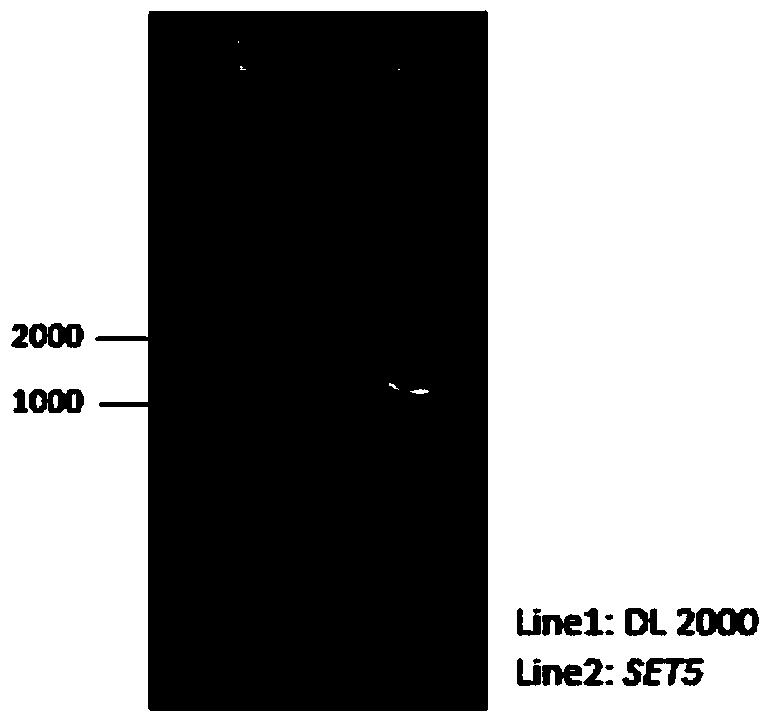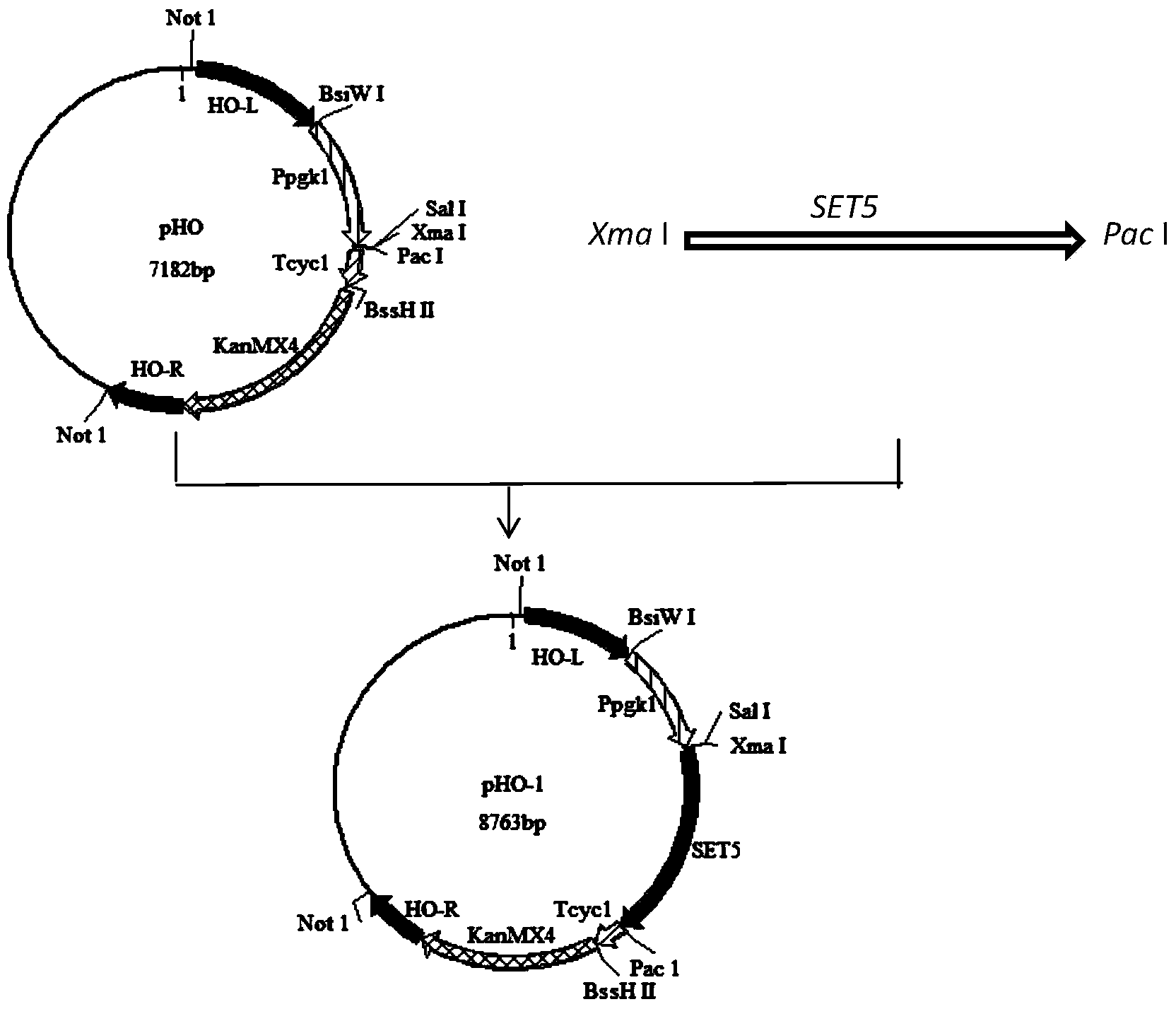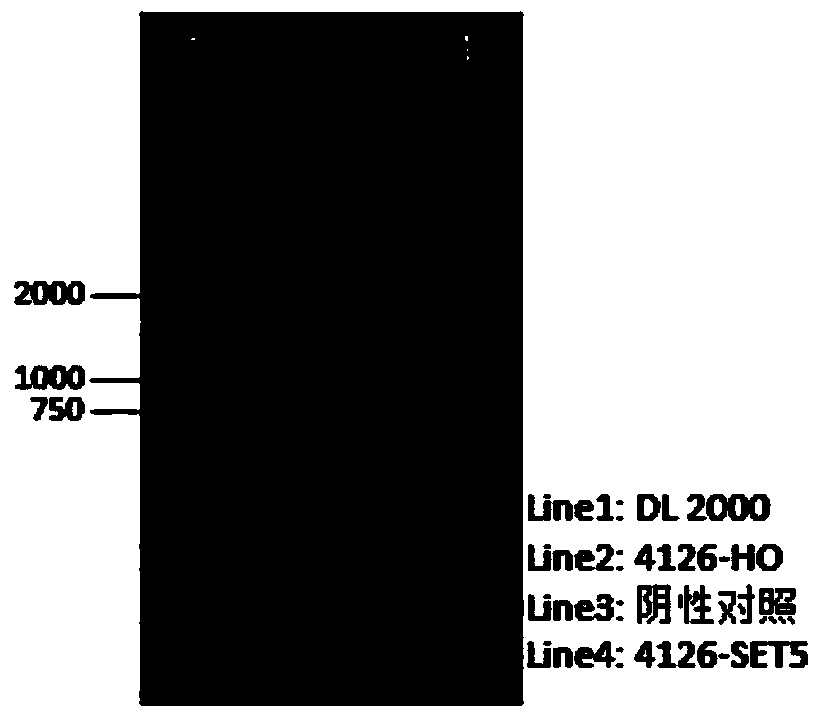Recombined saccharomyces cerevisiae strain with stress tolerance
A Saccharomyces cerevisiae strain and tolerance technology, applied in the field of microorganisms, can solve the problems of low cellulase hydrolysis efficiency and achieve high ethanol fermentation efficiency
- Summary
- Abstract
- Description
- Claims
- Application Information
AI Technical Summary
Problems solved by technology
Method used
Image
Examples
Embodiment 1
[0017] Example 1: Construction and transformation of recombinant Saccharomyces cerevisiae containing histone methylase encoding gene SET5
[0018] The sequence of the histone methylase encoding gene SET5 involved in the present invention comes from the NCBI public database, and the GenBank accession number of the gene is NC_001140.6. A PGK1 promoter is used as a gene promoter, a CYC1 terminator is used as a terminator, and the SET5 gene is inserted between the PGK1 promoter and the CYC1 terminator in an enzyme-cut ligated manner. Then, the constructed plasmid was linearized through the restriction site NotI, and transformed into industrial Saccharomyces cerevisiae 4126 for expression.
[0019] 1.1 Saccharomyces cerevisiae genomic DNA extraction
[0020] (1) Centrifuge the overnight cultured yeast liquid at 12000rpm for 2min, remove the supernatant;
[0021] (2) Add 480 μL TE solution (pH 8.0) and 20 μL lysozyme solution (2 mg / mL) to the precipitate, vortex and mix well, and ...
Embodiment 2
[0087] Example 2: Transformation of Industrial Saccharomyces cerevisiae Containing Histone Methylase Encoding Gene SET5
[0088] Saccharomyces cerevisiae cell transformation method is as follows:
[0089] 2.1 Preparation of Saccharomyces cerevisiae electroporation competent cells
[0090] (1) Yeast was inoculated with YPD medium, cultured at 30°C, 150rpm for 12-14 hours, and then transferred to new YPD medium (1% inoculation) for overnight culture;
[0091] (2) The next day, place the culture bottle on ice for at least 15 minutes to stop the growth of bacteria. Pre-cool the 50mL centrifuge tube, ultrapure water, and 1M sorbitol solution on ice, and keep it in a low temperature state;
[0092] (3) Collect the bacteria by centrifugation, mix the bacteria gently with an equal volume of ultrapure water (shake upside down, do not blow with a pipette gun), centrifuge at 3000g, 5min, 4°C to collect the bacteria, discard the supernatant, Repeat this step twice; (4) Wash the bacteri...
Embodiment 3
[0102] Example 3: Comparison of plate growth of recombinant empty yeast 4126-HO control strain and recombinant Saccharomyces cerevisiae 4126-SET5 under different stress factors
[0103] 3.1 Comparison of growth of recombinant empty yeast 4126-HO control strain and recombinant Saccharomyces cerevisiae 4126-SET5 on high temperature plate
[0104] (1) Inoculate the recombinant empty yeast 4126-HO control strain and recombinant Saccharomyces cerevisiae 4126-SET5 into a 250mL shake flask containing 50mL seed medium (20g / L glucose, 20g / L peptone, 10g / L yeast extract powder) , 30°C, 150 rpm, culture overnight;
[0105] (2) Repeat step (1);
[0106] (3) Take the bacterial solution separately, measure its absorbance value OD at 620nm, then use the seed medium to adjust the OD to 0.3, inoculate the seed medium with 10% inoculation amount (same as step 1), and incubate for 5 hours;
[0107] (4) Take the bacterial liquid separately and measure its absorbance value OD at 620nm. At this t...
PUM
 Login to View More
Login to View More Abstract
Description
Claims
Application Information
 Login to View More
Login to View More - R&D
- Intellectual Property
- Life Sciences
- Materials
- Tech Scout
- Unparalleled Data Quality
- Higher Quality Content
- 60% Fewer Hallucinations
Browse by: Latest US Patents, China's latest patents, Technical Efficacy Thesaurus, Application Domain, Technology Topic, Popular Technical Reports.
© 2025 PatSnap. All rights reserved.Legal|Privacy policy|Modern Slavery Act Transparency Statement|Sitemap|About US| Contact US: help@patsnap.com



